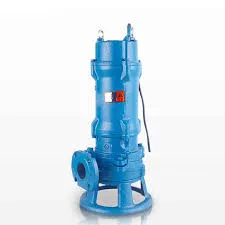Uzbek
- Afrikaans
- Albanian
- Amharic
- Arabic
- Armenian
- Azerbaijani
- Basque
- Belarusian
- Bengali
- Bosnian
- Bulgarian
- Catalan
- Cebuano
- Corsican
- Croatian
- Czech
- Danish
- Dutch
- English
- Esperanto
- Estonian
- Finnish
- French
- Frisian
- Galician
- Georgian
- German
- Greek
- Gujarati
- Haitian Creole
- hausa
- hawaiian
- Hebrew
- Hindi
- Miao
- Hungarian
- Icelandic
- igbo
- Indonesian
- irish
- Italian
- Japanese
- Javanese
- Kannada
- kazakh
- Khmer
- Rwandese
- Korean
- Kurdish
- Kyrgyz
- Lao
- Latin
- Latvian
- Lithuanian
- Luxembourgish
- Macedonian
- Malgashi
- Malay
- Malayalam
- Maltese
- Maori
- Marathi
- Mongolian
- Myanmar
- Nepali
- Norwegian
- Norwegian
- Occitan
- Pashto
- Persian
- Polish
- Portuguese
- Punjabi
- Romanian
- Russian
- Samoan
- Scottish Gaelic
- Serbian
- Sesotho
- Shona
- Sindhi
- Sinhala
- Slovak
- Slovenian
- Somali
- Spanish
- Sundanese
- Swahili
- Swedish
- Tagalog
- Tajik
- Tamil
- Tatar
- Telugu
- Thai
- Turkish
- Turkmen
- Ukrainian
- Urdu
- Uighur
- Uzbek
- Vietnamese
- Welsh
- Bantu
- Yiddish
- Yoruba
- Zulu
Telephone: +86 13120555503
Email: frank@cypump.com
Dek . 11, 2024 06:00 Back to list
Slurry Tank Pump Maintenance and Repair Guide for Optimal Performance
Repairing Slurry Tank Pumps A Comprehensive Guide
Slurry tank pumps are essential components in various industries, including mining, wastewater treatment, and manufacturing. These pumps are specifically designed to handle thick, viscous materials—such as slurry, which is a mixture of solids and liquids. Over time, wear and tear can affect the functionality of these pumps, leading to operational inefficiencies and potentially costly downtime. Understanding the nuances of slurry tank pump repair can prolong their lifespan and improve performance.
Understanding Slurry Tank Pumps
Slurry tank pumps can be categorized into several types, including centrifugal, positive displacement, and diaphragm pumps. Choosing the right type depends on the specific characteristics of the slurry being processed, including particle size, viscosity, and temperature. Regular maintenance is vital for these pumps, but repairs are sometimes unavoidable due to various factors such as abrasive materials, high operational pressures, and continuous service.
Common Issues with Slurry Tank Pumps
Before delving into the repair process, it's important to identify common issues that can occur with slurry tank pumps
2. Seal Failure Pumps that handle abrasive and corrosive materials may experience seal leaks, which can result in contamination and fluid loss.
3. Cavitation Insufficient suction pressure can cause cavitation, leading to vapor bubbles forming in the pumping chamber. This phenomenon can result in severe damage over time.
4. Blockages Slurry can contain large solids that may clog the pump, inhibiting flow and causing unnecessary strain on the motor.
5. Motor and Electrical Issues Malfunctions in the motor or electrical components can lead to operational failures, requiring thorough investigation and repair.
slurry tank pump repair

Steps for Repairing Slurry Tank Pumps
1. Initial Inspection The first step in the repair process is a comprehensive inspection of the pump. Check for visible signs of wear, leaks, and blockages. Use diagnostic tools to identify any electrical or mechanical issues.
2. Disassembly Carefully disassemble the pump, noting the arrangement and condition of each component. Keep track of screws, seals, and other small parts, ensuring you don’t lose any critical components.
3. Cleaning Clean all parts thoroughly to remove any build-up of slurry or debris. This is essential for ensuring that the repaired pump operates smoothly and efficiently.
4. Replace Worn Parts Replace any worn or damaged components, including impellers, casings, seals, and bearings. Use high-quality replacement parts that are specifically designed for your model of pump.
5. Reassembly Reassemble the pump, ensuring that all components are correctly aligned and securely fastened. Pay attention to the sealing surfaces and apply gasket sealant where necessary to prevent leaks.
6. Testing After reassembly, conduct a thorough testing of the pump. Check for any unusual noises, vibrations, or leaks during operation. Monitor the pump's performance to ensure it operates at the desired flow rate and pressure.
7. Regular Maintenance To minimize the likelihood of future repairs, establish a regular maintenance schedule. This should include periodic inspections, cleaning, and lubrication of parts as necessary.
Conclusion
Repairing slurry tank pumps can be a daunting task, but a proactive approach can enhance their longevity and reliability. By understanding the common issues associated with these pumps and following a systematic repair process, operators can minimize downtime and maintain efficient operation. Regular maintenance, combined with timely repairs, can save significant costs in the long run and ensure that these critical components continue to perform at their best in demanding industrial environments.
-
Custom Drilling Mud and Slurry Pump Supplier - High Efficiency, Tailored Solutions
NewsJun.10,2025
-
Supply Vertical Submersible Sewage Pump High-Efficiency WQ/QW Pumps Supplier
NewsJun.10,2025
-
Premium Sewage Ejection System & Pumps Efficient Waste Removal
NewsJun.09,2025
-
Premium Wholesale Slurry Pump Impellers Durable & Efficient Slurry Handling
NewsJun.09,2025
-
Top Sewage Pump Companies Durable Industrial Solutions for Efficiency
NewsJun.09,2025
-
Heavy Duty Slurry Pumps - OEM High Performance & Bulk Wholesale
NewsJun.09,2025










